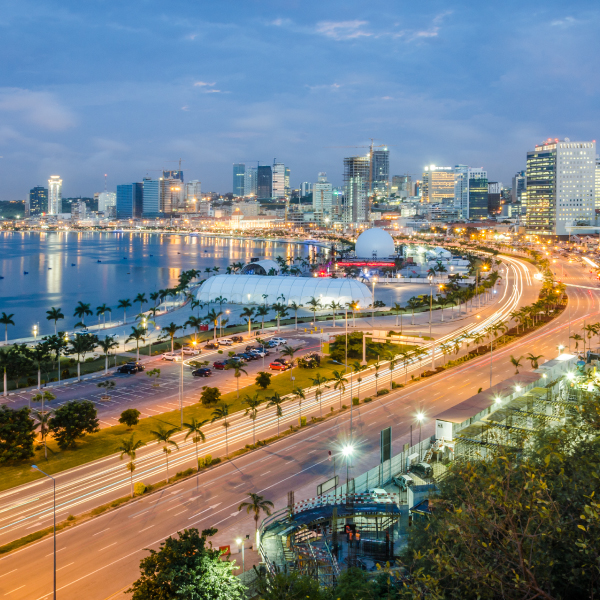AMR: Angola

We expect GDP growth of 3.3% y/y in 2022 then easing to 2.4% y/y in 2023.We expect the C/A surplus to reach 15% of GDP in 2022 and 7.2% of GDP in 2023.. We see the USD/AOA pair at 432.3 at year-end.
GDP growth – investment still needed to stem sliding growth
With oil prices now higher, our GDP growth forecast now stands at 3.3% y/y for 2022. Growth was just 0.7% y/y in 2021 as this economy exited a 5-y recession that had begun in 2016. However, due to its dependency on the oil sector, Angola’s growth tends to be volatile, as this sector accounts for one-third of GDP, over 95% of exports, and over 50% of fiscal revenue. An acceleration in foreign direct investment (FDI) is required to support both oil and non-oil economies, ensure a more diversified economy, and reduce growth volatility.
Should oil ease, GDP growth may ease to 2.4% y/y in 2023. High unemployment, last reported at 32.9% in Q4:21, combined with high inflation, may see reduced disposable income limiting personal consumption expenditure (PCE) contribution to growth. However, this year’s acceleration in government expenditure (GE) should compensate for subdued PCE.
Balance of payments – a robust C/A surplus
We forecast a C/A surplus of 15% of GDP, or USD18.9bn, for 2022, mainly on higher oil prices, from 12.4% of GDP, or USD8.4bn in 2021, then easing to 7.2% of GDP, or USD10bn, in 2023 as oil eases while imports grow more. Our average oil price assumption for 2022 is now USD93.6/bbl, up by 32.3% y/y, from USD70.1/bbl in 2021. However, we see oil prices falling by 11% y/y in 2023, to USD83.3/bbl.
Supporting exports, oil output may rise by 2.7% y/y this year and by 0.6% y/y next year, to respectively 1.155 m bpd and 1.162 m bpd. These are the first annual increases in oil production since 2015 due to recent investments meant to stabilise Angola’s oil output (which has been in decline since 2016). FX reserves may hover around USD15bn this year and next year, supported by high oil prices. Reserves should be shielded by ongoing FX rate flexibility.
Monetary policy – cutting policy rates but keeping local currency liquidity under tight control
The BNA will likely cut the BNA rate by 200 bps in Q4:22, to 18%, with a further 450 bps in cuts during 2023 as inflation eases to 13.3% y/y by Dec 2023. Inflation has been coming off high levels; it was 25.8% y/y in Apr, from a peak of 27.7% in Jan.
We see year-end inflation at 16.1% y/y, owing to a stronger kwanza, the ongoing administration of strategic food
reserves, lower taxes on selected basic food imports, and the maintenance of fuel subsidies. Our base case FX rate forecasts see the kwanza appreciating by 28.4% this year, then shedding some 8% in 2023. It had appreciated by 18.2% in 2021.
FX outlook – sporadic FX liquidity shortages
Our base case sees the USD/AOA pair at 432.3 by Dec, supported by Treasury’s regular FX sales. The Treasury has maintained a regular supply of USD25m daily since late 2021, thereby materially improving FX liquidity in the market and also supporting the kwanza. It’s also being supported by relatively tight local currency supply by the BNA.
Download the annual indicators.